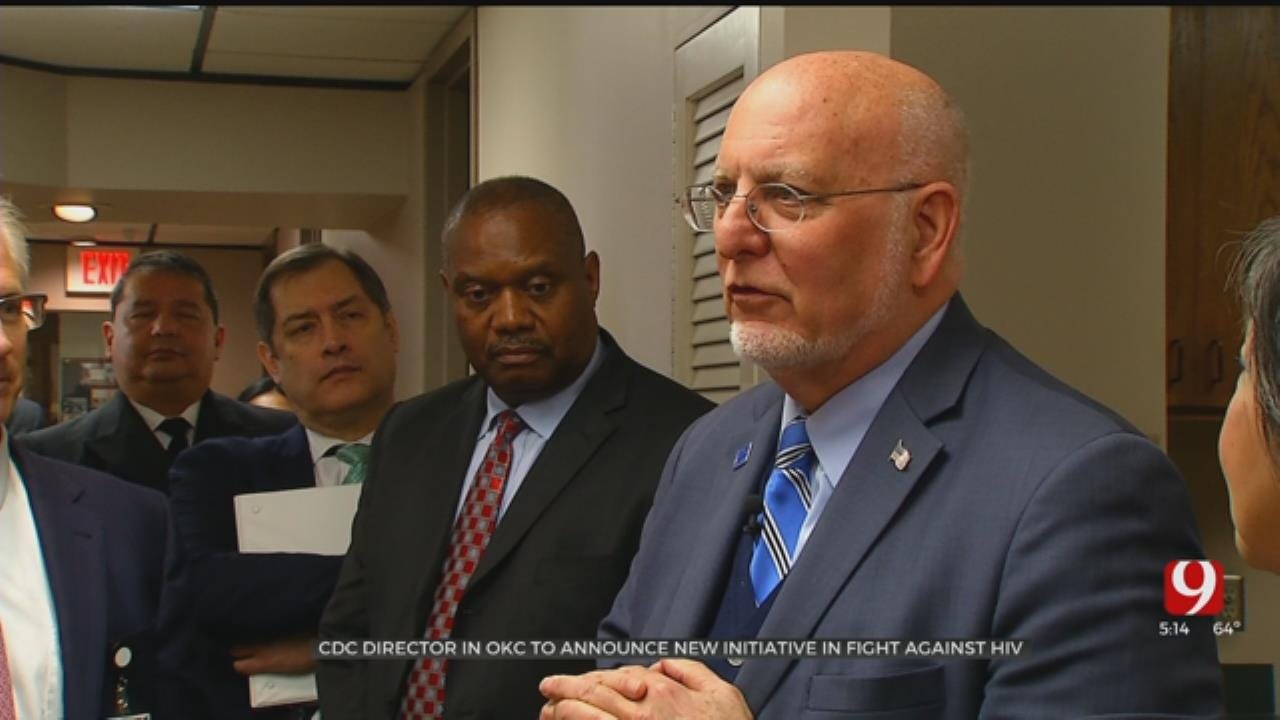Oklahoma HIV Epidemic In Spotlight As CDC Director Visits OKC
Making his way through the OU Medical Center’s small HIV clinic Centers for Disease Control and Prevention, Dr. Robert Redfield promises big things are ahead in the fight against the disease. His visit was in conjunction with his invitation to be spTuesday, March 26th 2019, 5:02 pm
Making his way through the OU Medical Center’s small HIV clinic Centers for Disease Control and Prevention, Dr. Robert Redfield promises big things are ahead in the fight against the disease.
His visit was in conjunction with his invitation to be speak at the OU College of Public Health. He spoke about his work on HIV and AIDS in the early days of the national epidemic.
“We have some really outstanding expert physicians in OU medicine who focus on this and it's going to highlight the way that our Medicine and the Health Sciences Center partners with for example the [Oklahoma State Department of Health] and other community groups in an organized partnership way to again attack this problem,” said OU College of Public Health Dean.
Oklahoma is currently one of ten states in the midst of an HIV epidemic. It has also been chosen to participate in a new national plan to end the spread of HIV and AIDS in the next ten years. The plan was born out of a promise made by President Donald Trump.
Read Related Story: 2nd Man Apparently Free Of HIV/AIDS Virus Following Stem Cell Transplant
The plan calls for $291 million to be given to 48 counties and seven states, most of them urban areas. Redfield said Oklahoma, along with Alabama, Arkansas, Kentucky, Mississippi, Missouri and South Carolina were all chosen because of their rural population and the sparse access to health care in those areas.
“We felt that if we get a great program that works in cities how does that help our nation to really bring an end to the aids epidemic,” Redfield said. “We needed to pick some rural environments.”
According to Redfield, in many rural communities the largest challenge in ending the spread of HIV is ending the stigma surrounding receiving and HIV diagnosis or simply getting tested for the virus. He said education in schools and a comprehensive statewide program are recommended by national health agencies, although he added what is eventually done with the money will be up to local officials.
“We believe that comprehensive program includes pre-exposure prophylaxis, it includes sex education, condoms, it includes safe syringe programs,” he said.
Oklahoma lawmakers are currently debating whether to mandate improvements to state sex ed curriculum on HIV, where in some areas it hasn’t been updated since the 1980s.
The silence of stigma paired with the growing number of diagnoses and a lack of interest form prospective doctors has hit HIV-high risk communities hard. In the OU HIV clinic alone, doctors see roughly 100 patients a day, 95 percent of them HIV-positive and the search for passionate physicians has become more difficult, according the clinic manager, Andy Moore.
Redfield got his start treating HIV patients, before HIV or AIDS had official names, often watching patients and close friends pass away with little to be done. On Tuesday, he struck a tone of hopefulness that the tide may be turning in a decades long fight to end an epidemic.
He says the plan is to cut the number of infected Americans by 75 percent in the next five to seven years and be within 90 percent eradication within 10.
“It's not going to happen in a day. It's going to take a decade,” Redfield said.
More Like This
March 26th, 2019
March 3rd, 2020
February 27th, 2020
February 26th, 2020
Top Headlines
January 7th, 2025
January 7th, 2025
January 7th, 2025










